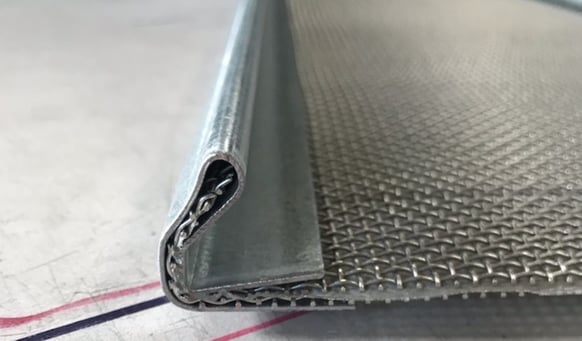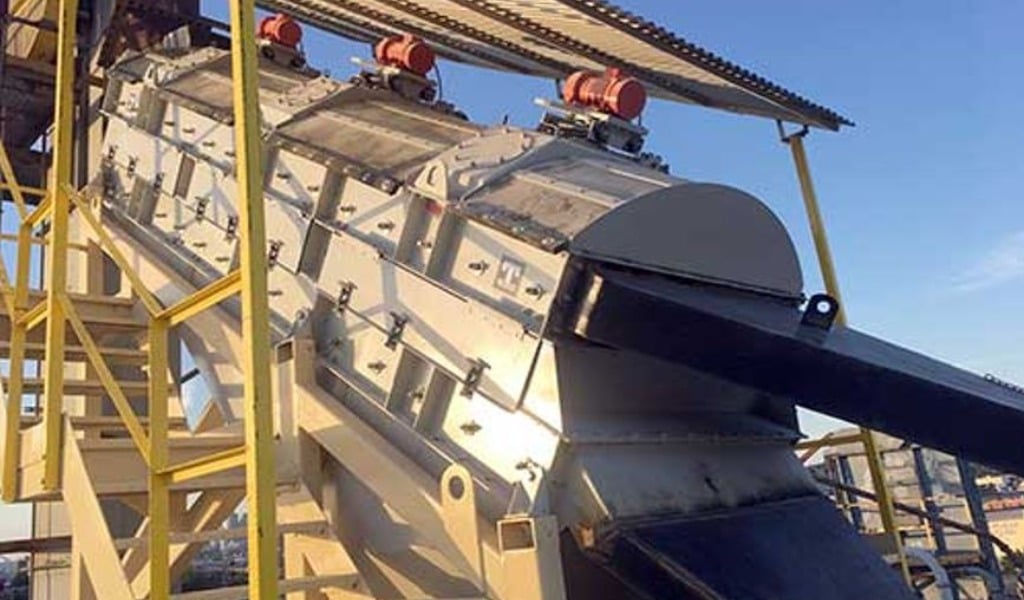How to Install a Woven Wire Vibrating Screen Section
So you've weighed your options and have identified woven wire vibrating screen sections are the best screening media for your aggregate screening operation. But to reduce any lapses in your process, you understand that you must properly install them into your vibrating screen machine.
Having said that, what steps should be taken when installing your woven wire vibrating screen sections?
W.S. Tyler has been in the wire weaving business for over 150 years and has been helping the aggregate industry screen material along the way. We strive to help aggregate screening operations remove the roadblocks that hinder their ability to separate particles efficiently.
With that, we wrote the following article to serve as a step-by-step guide to installing a woven wire vibrating screen section into your vibrating screen machine. It will cover:
- What a woven wire vibrating screen section is
- How woven wire vibrating screen sections work
- The process of properly installing a woven wire vibrating screen section
- The risks of using improperly installed woven wire vibrating screen section
What Is a Woven Wire Vibrating Screen Section?

Woven wire vibrating screen mesh is fabricated wire mesh sections that work to screen various aggregates in large volumes. These wire mesh screen sections are designed to fit various vibrating screen machines and typically screen two to four tons of material an hour.
With a standard particle size range of 4 mesh to 325 mesh, wire mesh screen sections are comprised of either one or two layers of mesh, depending on the specifications of the screening mesh layer. They also feature dual clamping hooks to ensure the screens remain secured after being properly secured.
How Do Woven Wire Vibrating Screen Sections Work?
Woven wire vibrating screen sections are typically mounted in the screen so that the openings are at a right angle in relation to the flow of material. This means that when material begins to flow, the particles will hit the wires in the weave, bounce up, then find the opening.
Now, a typical vibrating screen machine has approximately three screen section decks, with your coarsest mesh specification on the top deck and the finest specification on the bottom deck. As the vibrating screen machine operates, materiel will continue to hit wires, bounce, and pass through the openings until the particles are too large to pass.
As a result, you are left with particle batches that are separated by their size.
Installing Your Woven Wire Vibrating Screen Sections
To ensure you achieve an efficient screening of aggregate, it is critical that your wire mesh screen sections are drum-tight throughout. This requires you to properly install them using the following steps:
- Loosen and remove the tensioning rails on the side of the machine
- If present, remove the machine's center hold-down mechanism
- If present, remove the used screen session from the deck. You should also take this time to replace any worn crown rubber/gasket-type elements through the center hold-down mechanism, end edges, seals, and end supports.
- Remove any residual debris from the support angles, center hold-down mechanism, end supports, and seals
- Once clean, apply a lubricant to every support angle
- Position a new screen section in the center of the side plates. For proper tensioning, ¾" of give should be left between the outside of the hook and the side plates.
- For machines with center hold-down mechanisms: Align the holes of the screen section with the center hold-down mounts, insert the bolts, and tighten the hold-down mechanism by hand.
- Reposition the side tensioning rails until snug
- Bring the screen section into fill tension by tightening the side tension rails
- Ensure the center hold-down mechanism bolts are fully tightened. You will know that the bolts are adequately tightened when the screen layer of your screen section becomes drum tight.
Now, if your vibrating screen machine includes a center post, you should ensure that the post runs perpendicular to the surface of your screen section(s). For best result, it is recommended that you check the state of the tensioning rails and screen tensioning after the machine completes an operating cycle in its entirety.
What Are the Risks of an Improperly Installed Woven Wire Vibrating Screen Section?
The biggest concern associated with woven wire screen sections is having too much slack in the screening mesh layer. Ultimately, this can lead to premature wear and tear.
This causes excessive downtime and replacement costs.
Explaining this further, when a screen section is installed and tensioned properly, material "floats" as it cascades down the flow direction. When the mesh is not tensioned, the slack causes the typically flat plain to have inconsistent dips and peaks.
When your material hits these dips and peaks, the impact on the wires is vastly greater than the impact wires encounter when fully tensioned. This leaves you with kinks and breaks in your mesh, which can affect your equipment's ability to screen material.
Is Woven Wire Vibrating Screen Sections Right for You?
Woven wire vibrating screens are fine wire cloth screening media designed to separate various aggregate particles on a large scale. As they must be drum tight to produce desirable results, it is key that you install your wire mesh screen sections into your vibrating screening machine properly.
Now, once your screens are installed and in use, you may find that your particles are too large to be screened by woven wire vibrating screen sections. If you find yourself in this situation, you will need to explore similar screening media designed for larger particles, such as Flex-Mat®.
Having helped dozens of aggregate organizations screen material and deliver uniform products for over 80 years, W.S. Tyler wants to help build your confidence in your ability to accurately screen your aggregate particles.
For an in-depth analysis of how Flex-Mat and woven wire vibrating screen sections compare, read the following article:
About Ronnie Brown
Ronnie is the Content Writer for W.S. Tyler and has four years of experience as a professional writer. He strives to expand his knowledge on all things particle analysis and woven wire mesh to leverage his exceptional writing and graphic design skills, creating a one-of-a-kind experience for customers.




